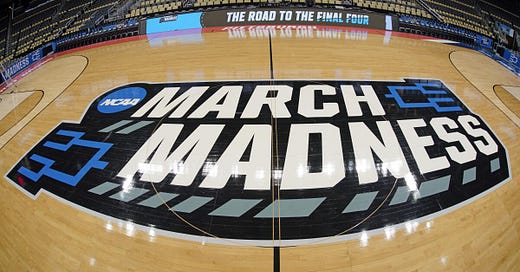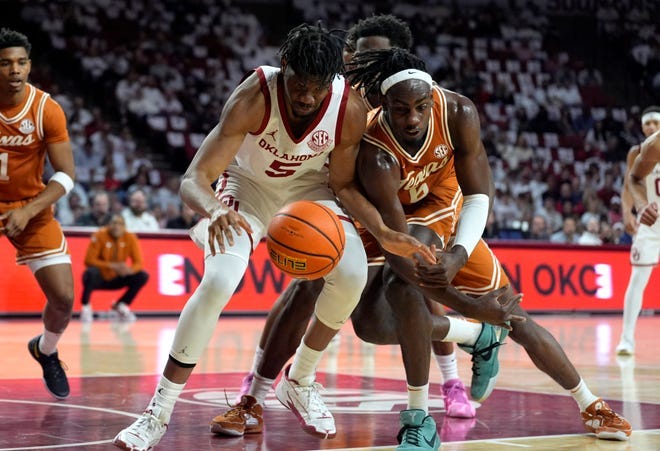NCAA Tournament expansion is a bad idea. Here's why
Let's dive into the various ways that even stretching the March Madness field to 72 or 76 teams shouldn't be seriously explored
In five gloriously short days, there will be a bracket, a divine 68-team amalgamation that will be printed out and obsessed over among friends, family, office mates and friends for the better part of the next month.
The NCAA Tournament is a unifying event, a time when what is a niche sport for many of the preceding four months becomes a three-week national obsession. In the same way that the NFL owns a day of the week – one it ripped away from the church a long time ago – college basketball owns an entire month of the calendar.
At least some of what makes the madness of March so appealing could soon be changing.
As the start of the 2025 NCAA Tournament nears, there’s been increased public chatter about the possibility of the event expanding from its current model. Dan Gavitt, the NCAA’s top basketball executive, has been sifting through the issue on various media outlets, noting it could happen or eventually be put to the side. Prominent journalists like Seth Davis have not only written about a larger NCAA Tournament field, but argued breathlessly in support of its merits.
SEC commissioner Greg Sankey has been pushing for expansion as far back as 2022, when his league got six teams in the field. Since then, it has morphed into a behemoth, with as many as 14 of its 16 teams at least in the conversation to make this year’s tournament. Still, despite that historically high representation, the SEC and Big Ten have been trying to exert their influence in any expansion plans – that is, if the field does grow, they want at least some, if not a majority, of those extra spots going to their members. And if they don’t? There’s always the possibility they could break away and form their own, inevitably shitty event.
Though it’s often couched in careful language, the NCAA is, at the very least, publicly considering touching an event so many justifiably believe should be untouchable.
"The committees are giving it more consideration than at any time in my 10-plus years at the NCAA," Gavitt told the Field of 68. "At the end of the day, there’s no intended outcome here. One outcome is no expansion at all and if there is a recommendation to expand, it would likely be modest in nature."
As Gavitt mentioned, if the tournament does expand, it wouldn’t be anything whiplash-inducing. Most educated guesses have the new field at 72 or 76 teams, which would be an addition of either four or eight squads.
It’s harmless enough, right? Not exactly.
For all the arguments that people can make in favor of expansion, many of them fall apart under even cursory examination.
Let’s take a look at some of the biggest reasons why the Big Dance doesn’t need any more invitees walking through its doors:
It might not make financial sense
Among some of those who zealously oppose tournament expansion, there’s a belief that the primary motivation for growing the event is to make more money.
That might be a faulty assumption.
From a television perspective, the tournament’s play-in games generate strong viewership, especially compared to the regular season, but they fall far below first- and second-round matchups. The NCAA said last year’s four play-in games drew a total of 6.2 million viewers, which falls well short of the 8.5 million average from first-round games on Thursday and Friday. It’s more inventory that will generate more eyeballs, sure, but it’s not nearly the kind of audience the tournament is able to typically generate. And for many of the casual fans the sport brings in every March, the tournament starts on Thursday.
Beyond that, much of the financial incentive for schools in the NCAA Tournament comes from units – that is, a payout a conference receives for its team making the tournament, with more checks coming with each round a team from a given league advances. A unit is worth about $2 million apiece.
As Dan Wolken at USA Today pointed out, adding eight teams to the field would mean that the tournament would need to generate an additional $16 million in revenue to make it worth it. That doesn’t even take into account the extra expenses of facilities, staff, travel, food and everything else that will need to be provided to accommodate eight more teams. Would whatever extra revenue the NCAA rakes in from having eight more teams exceed all those new expenditures – and, critically, ensure that units would at the very least be what they were worth in the 68-team model? It’s questionable.
The bubble is already bad enough
For those interested in the NCAA Tournament as a consumer product and not a money-making venture, this is probably the most common and persuasive argument.
Keep reading with a 7-day free trial
Subscribe to The Front Porch to keep reading this post and get 7 days of free access to the full post archives.





